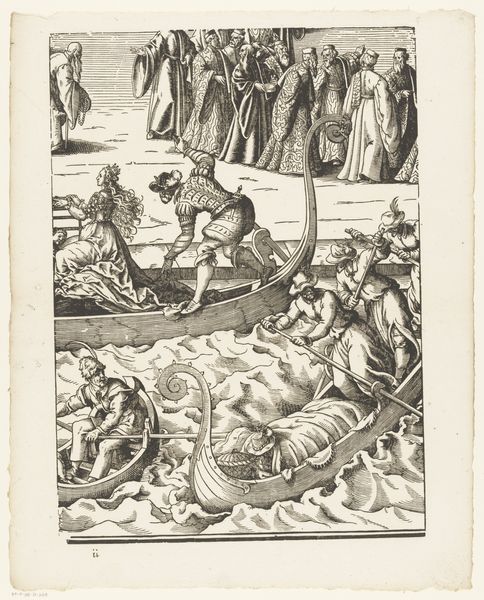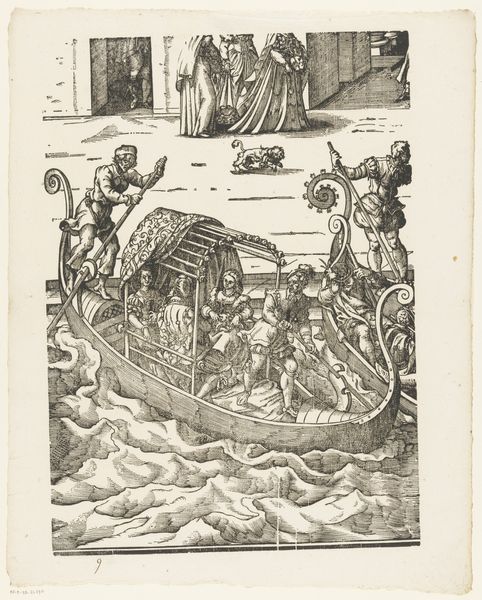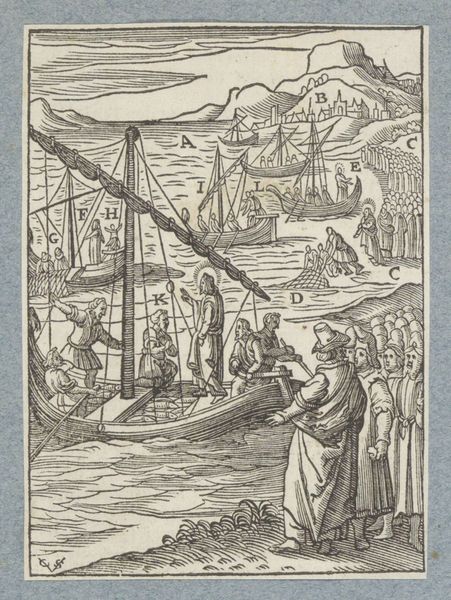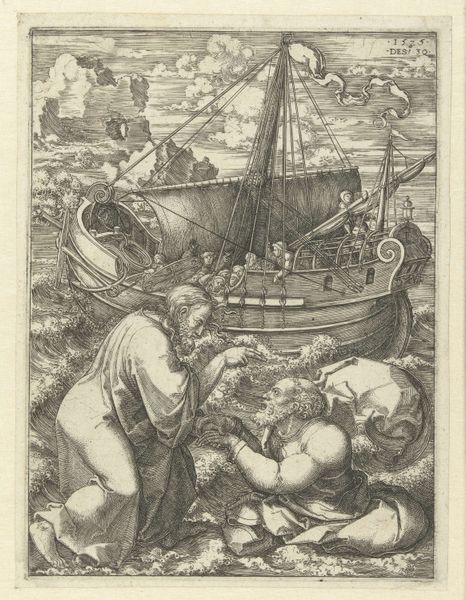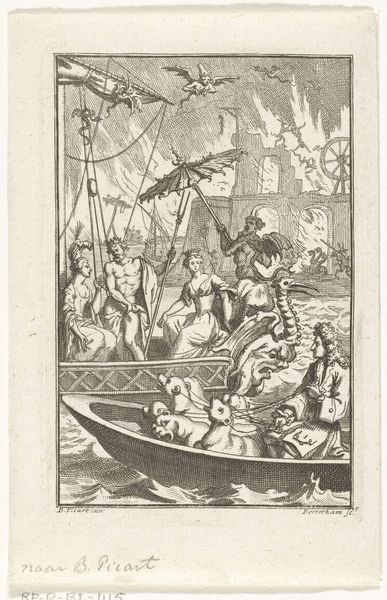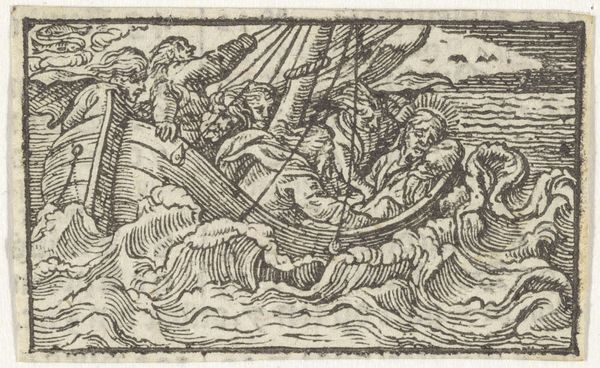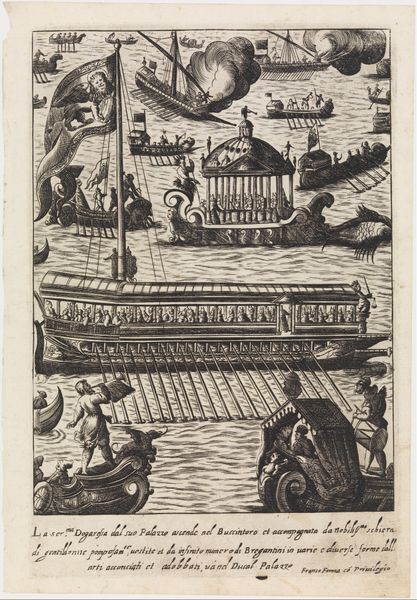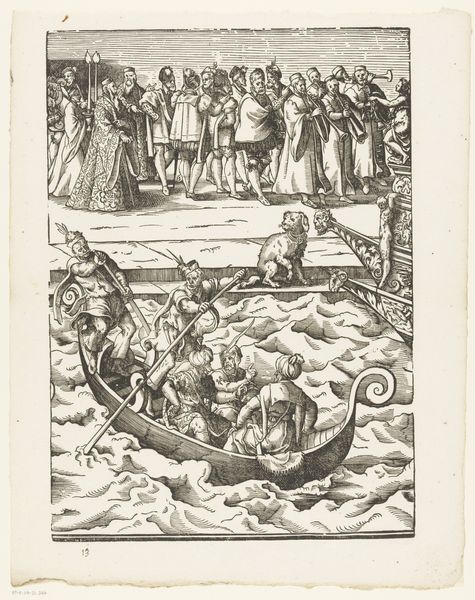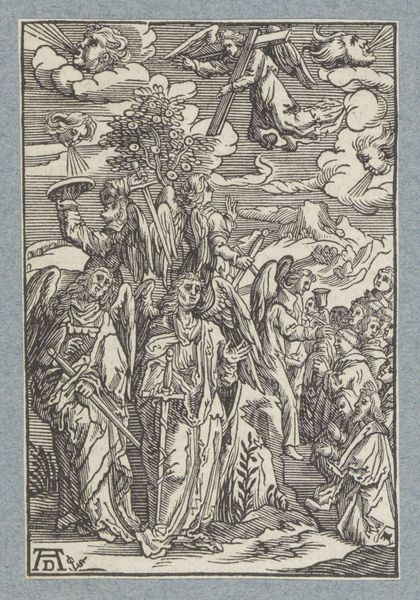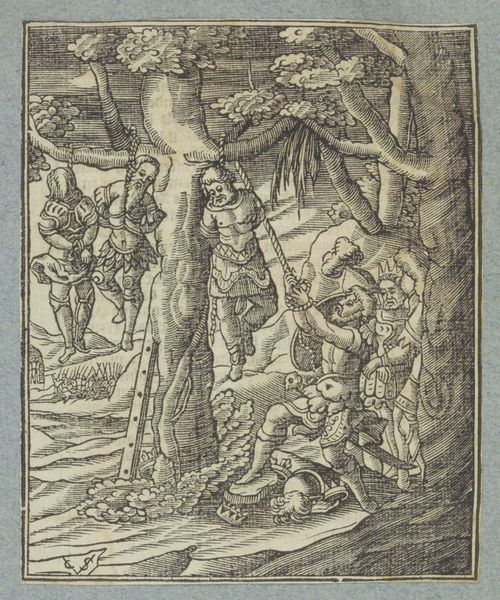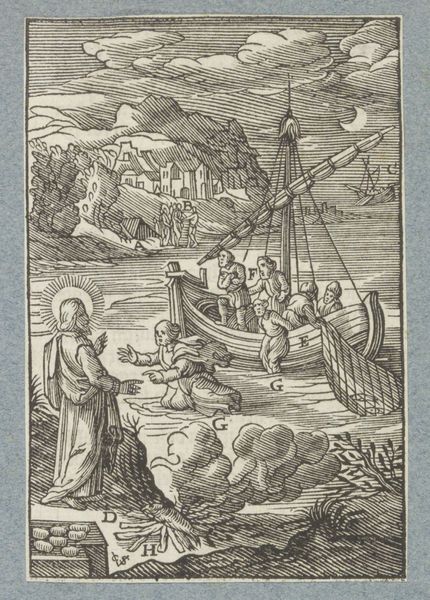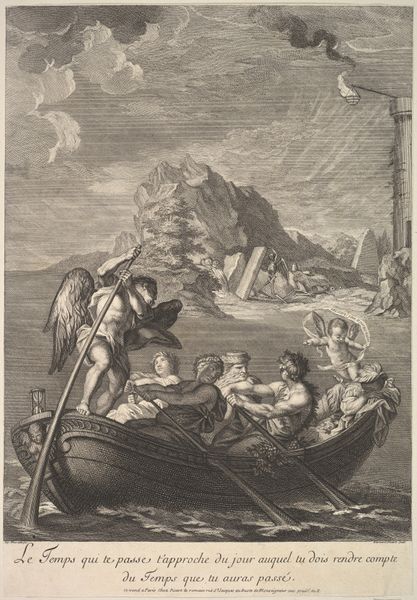
drawing, print, engraving
#
drawing
#
narrative-art
# print
#
landscape
#
figuration
#
italian-renaissance
#
engraving
Dimensions: 7 15/16 x 5 13/16 in. (20.1 x 14.8 cm)
Copyright: Public Domain
Curator: Look at this engraving, "The Bark," created by Agostino Veneziano sometime between 1514 and 1536. It resides here at the Metropolitan Museum of Art. Editor: Immediately, the swirling water and the rather precarious-looking boat create a feeling of dramatic tension. The composition draws the eye across the scene, doesn’t it? Curator: Indeed. What interests me here is the labor involved in the printmaking process. Consider the meticulous work required to create those fine lines on the plate, which would have involved physical toil. Think, too, of the availability of the copper itself during the Italian Renaissance. Was it sourced locally, and what social class was privy to this type of artistic output? Editor: That level of detail, achieved solely through line and form, is incredible. I’m also drawn to the interplay between the figures and the landscape—the jagged rocks framing the open sea, and the precariousness that boat of travelers occupies in all that space. It's all designed to create this sense of unease. Curator: Yes, and that uneasy tension also begs some crucial questions about labor, for instance the figure in the center who's operating the boat by hand while the captain rests in an almost classical repose. To what class of person might each of these figures have belonged? Editor: Let's also consider how the artist utilizes the contrast between light and shadow. This work is all the more fascinating when we consider that color doesn't come into play. These techniques underscore the depth of space and drama of this scene so meticulously depicted. Curator: These prints served as important mechanisms for the dissemination of classical artistic achievements. I like that we see within a single artwork, evidence of both ancient artistic influence and modern artistic progress happening simultaneously. Editor: Yes, examining both the structural and contextual qualities broadens the appreciation and the value for the contemporary viewer. I find myself even more captivated now.
Comments
No comments
Be the first to comment and join the conversation on the ultimate creative platform.
